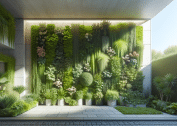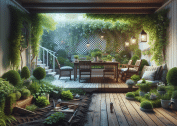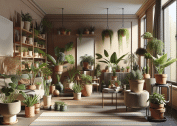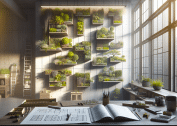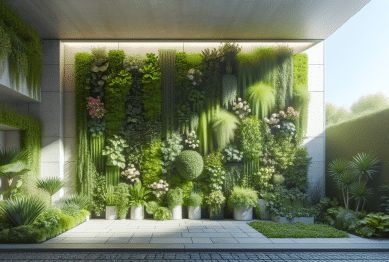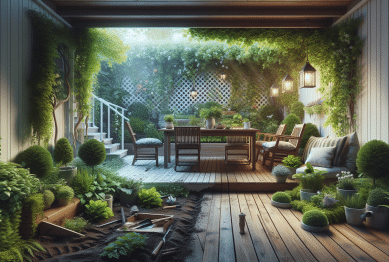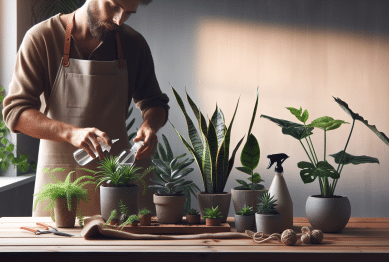In today’s world, maximizing every square inch of our living spaces has become more essential than ever. Whether you’re living in a cozy apartment or a compact house, smart interior design can transform small spaces into stylish, functional areas that feel spacious and inviting. The key? Combining clever layouts, multifunctional furniture, and thoughtful design elements to optimize space without sacrificing comfort or style.
Let’s explore some of the most innovative trends and strategies that are currently revolutionizing the way we approach small-space living.
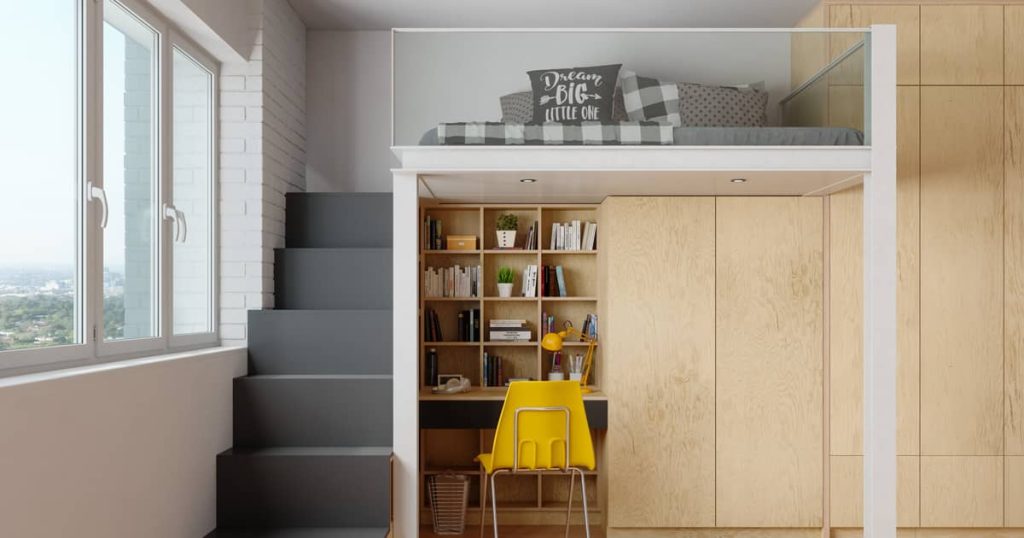
1. Multifunctional Furniture: The Ultimate Space-Saver
When dealing with small spaces, every piece of furniture should serve more than one purpose. Multifunctional furniture has become a game-changer, allowing homeowners to save space without compromising on comfort.
- Convertible Sofas and Beds: A sofa that transforms into a bed, or a coffee table that doubles as a desk, is no longer just a convenience but a necessity. These furniture pieces allow your space to work harder for you, offering flexibility without cluttering up the room.
- Storage-Friendly Furniture: Beds with built-in drawers, storage ottomans, and side tables with hidden compartments are excellent ways to keep things organized without sacrificing style. This approach reduces the need for bulky storage units that might crowd the space.
Multifunctional furniture not only helps save space but also contributes to an efficient, clutter-free living environment.
2. Embracing Vertical Space: Vertical Storage and Décor
In small spaces, it’s crucial to think vertically. Maximizing your wall space not only frees up valuable floor area but can also add a unique touch to the room’s design.
- Wall-Mounted Shelving: Installing floating shelves or wall-mounted cabinets helps store books, plants, and decorative items. This setup not only keeps the floor space open but also adds a modern, minimalistic vibe to the room.
- Tall Furniture: Consider tall, narrow furniture instead of wide, bulky pieces. For example, opt for a tall wardrobe or a bookshelf that reaches the ceiling. This helps in maximizing the space without making it feel cramped.
By using vertical space, you’re not just making your home more functional—you’re also creating a striking design element.
3. Smart Use of Color and Light: Creating the Illusion of Space
One of the simplest and most effective ways to make a small room feel larger is by focusing on color and lighting.
- Light Colors for Walls: Light shades like whites, light grays, and soft pastels reflect light, making the room feel more open. They visually expand the space, which is ideal for smaller rooms.
- Strategic Lighting: Adding mirrors, clever lighting, and large windows can help create the illusion of more space. Mirrors reflect light, brightening the space, while floor-to-ceiling windows provide an open, airy feel. Smart LED lighting, like recessed lights or under-cabinet lighting, can help in giving the room depth.
Incorporating these elements creates a visually spacious environment that feels open and welcoming.
4. Smart Tech Integration: The Future of Small Spaces
Technology has evolved to support small-space living. From smart thermostats to multi-purpose home automation systems, integrating tech can make your space more functional and comfortable.
- Smart Furniture: There are now smart desks, lighting, and even adjustable beds that can be controlled through your phone or voice assistant. These pieces adapt to your needs and streamline your space.
- Wireless Solutions: Investing in wireless gadgets, such as Bluetooth speakers, wireless chargers, and smart plugs, eliminates the need for messy wires and cords, which can easily overwhelm a small space.
The future of small-space living is all about making the most of technology to simplify your lifestyle, minimize clutter, and enhance functionality.
5. Space-Saving Layouts: Open Concepts and Zoning
Creating a layout that flows seamlessly between spaces is essential for small homes. An open concept layout helps in making a small apartment or house feel larger, but it’s also important to create defined zones within the space.
- Open Concept Floor Plans: By removing unnecessary walls, you can create a sense of spaciousness and increase light flow. Living, dining, and kitchen areas can coexist without feeling cramped if you use layout techniques that preserve flow.
- Zoning with Furniture: Use area rugs, shelving, and furniture to define different zones within a room. For example, a couch facing away from the dining area can visually separate the two zones without requiring a physical partition.
A smart layout ensures that your space feels large and airy while maintaining functionality.
6. Adding Greenery: Nature Meets Design
Incorporating plants into your small space can provide both aesthetic appeal and health benefits. Plants have been shown to reduce stress and increase air quality, making them a perfect addition to any home.
- Hanging Plants: For small spaces, hanging plants or wall-mounted planters are an excellent option. This allows you to add greenery without sacrificing valuable floor space.
- Small Indoor Trees: If you have a bit more room, a small indoor tree can serve as a focal point in the room, drawing attention upward and creating a more balanced space.
Bringing the outdoors inside doesn’t just make your space more beautiful—it also enhances the air quality and your well-being.
7. Personalizing the Space: Design that Reflects You
A small space doesn’t mean you have to sacrifice personality. Personalizing your home through decor, colors, and textures allows you to create a space that truly feels like yours.
- Gallery Walls and Art: Use your walls as a canvas for displaying artwork or photos. A gallery wall filled with framed art or photos helps create a personal, artistic touch without occupying floor space.
- Textural Contrast: Incorporating different textures, such as woven throws, velvet cushions, and wooden accents, can add dimension and interest to your small space without overwhelming it.
Personal touches can make even the smallest space feel like home.
Conclusion: Transform Your Small Space with Smart Design
Transforming small spaces into functional, stylish areas requires a mix of innovative thinking and smart design choices. With the right furniture, layout, color schemes, and technology, small spaces can be optimized to fit all of your needs while still feeling spacious and inviting. Remember, the goal is not to add more to the room but to make everything you add work harder for you. By thinking creatively and using space-saving strategies, you can create a home that looks and feels much larger than it really is.
References
- Brooks, R. (2023). Multifunctional furniture: The future of small space living. Home Design Today. Available at: https://www.homedesigntoday.com (Accessed: 14 August 2025).
- Smith, J. (2024). Innovative ways to use vertical space in small homes. Small Living Solutions. Available at: https://www.smalllivingsolutions.com (Accessed: 14 August 2025).
- Turner, L. (2025). Tech and small spaces: How smart technology is revolutionizing home design. Smart Living Magazine. Available at: https://www.smartlivingmag.com (Accessed: 14 August 2025).


